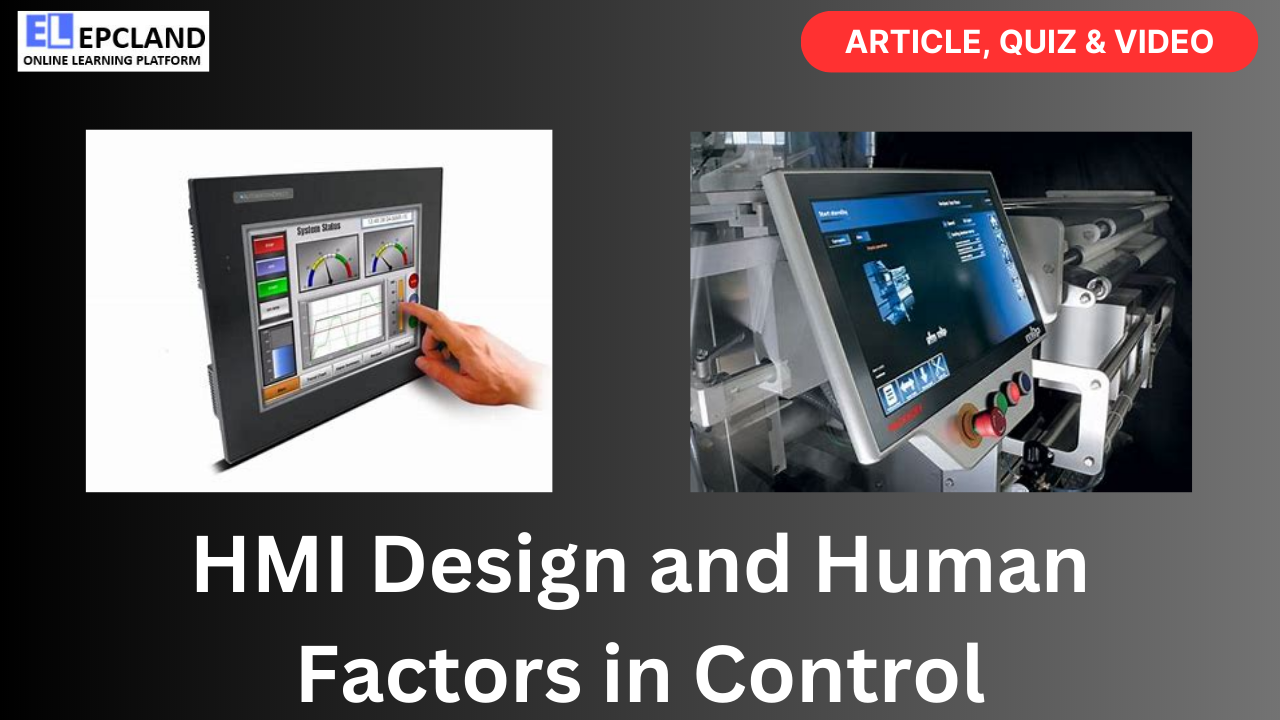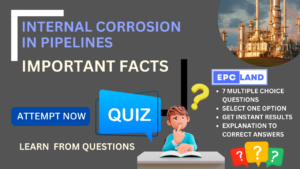In the high-stakes world of the Oil & Gas industry, efficient and safe operations are paramount. The Human-Machine Interface (HMI) serves as the crucial bridge between human operators and complex industrial systems. This article provides a comprehensive overview of HMI design and its significance in Oil & Gas projects.
Table of Contents
Do not miss the Complete Course on Piping Engineering
By EPCLand
Understanding Human-Machine Interface (HMI)
What is HMI?
Human-Machine Interface, often referred to as HMI, is a user interface or dashboard that connects a human operator to the control system of a machine, equipment, or industrial process. HMIs are designed to present information in a user-friendly and easily comprehensible manner, allowing operators to monitor and control processes effectively.
Role of HMI in Oil & Gas Projects
In the Oil & Gas industry, HMIs are the primary tools through which operators interact with complex systems. Their role encompasses:
1. Real-time Monitoring
HMIs provide real-time data on critical parameters such as pressure, temperature, flow rates, and safety alarms. Operators rely on this information to ensure that processes are running within safe and efficient limits.
2. Control and Adjustment
Operators use HMIs to adjust control parameters, setpoints, and initiate actions, such as opening or closing valves or adjusting equipment settings, to maintain optimal process conditions.
3. Safety Management
Safety is paramount in Oil & Gas projects. HMIs incorporate safety features, including alarm systems and emergency shutdown controls, enabling operators to respond swiftly to potential hazards.
4. Data Analysis and Reporting
HMIs store historical data, allowing operators and engineers to analyze trends, identify issues, and optimize processes over time. They also generate reports for compliance and decision-making.
Working Principle of Human-Machine Interface (HMI)
The working principle of an HMI system involves several key components:
Sensors and Data Acquisition
Sensors placed throughout the Oil & Gas facility continuously collect data on various process parameters. These sensors may include pressure transmitters, temperature sensors, flow meters, and gas detectors. The collected data is transmitted to the HMI system in real-time.
Data Processing and Visualization
The HMI system processes the incoming data, converting it into user-friendly visuals such as charts, graphs, and numerical values. The data is organized and displayed on the HMI screens to provide operators with a clear and concise view of the current process status.
Operator Interaction
Operators interact with the HMI through touchscreens, keyboards, or other input devices. They can access different screens, view historical data, and make real-time adjustments to process parameters as needed. The HMI also provides alarms and notifications to alert operators to abnormal conditions.
Control and Feedback
When operators make adjustments through the HMI, the system sends control commands to actuators and control elements within the process. For example, if a temperature reading is too high, an operator can lower it by adjusting a setpoint, and the HMI will send a signal to the temperature control system to make the necessary changes.
Design Principles for Effective HMIs
Designing an effective HMI in Oil & Gas projects requires adherence to several key principles:
1. Clarity and Simplicity
HMIs should present information in a clear, organized, and intuitive manner. Avoid clutter, excessive data, or unnecessary complexity that can confuse operators.
2. Consistency
Consistent layout, color schemes, and terminology across all screens improve operator understanding and reduce the risk of errors.
3. Prioritization of Information
Critical data and alarms should be prominently displayed, ensuring operators can quickly identify and respond to important events.
4. User-Centered Design
The design should consider the needs and capabilities of the operators. User feedback and usability testing are essential to creating user-friendly HMIs.
5. Alarm Management
Effective alarm management is crucial. HMIs should provide clear, prioritized alarms with guidance on appropriate responses.
Do not miss the Complete Course on Piping Engineering
By EPCLand
Components of HMI Design
HMI design in Oil & Gas projects involves several essential components:
1. Graphical Elements
Graphical elements include charts, graphs, and diagrams that visually represent data and process conditions. These elements must be clear and easily interpretable.
2. Control Elements
Control elements, such as buttons, sliders, and switches, allow operators to interact with the system. Their design should be intuitive and responsive.
3. Alarm Displays
Alarm displays provide immediate notification of abnormal conditions. Effective alarm displays prioritize alarms, provide clear descriptions, and suggest actions.
4. Trends and Historical Data
Trend charts and historical data displays help operators analyze process behavior over time, enabling data-driven decision-making.
5. Navigation Menus
Navigation menus ensure operators can easily access different screens and functions within the HMI. Intuitive navigation is essential for efficiency.
Challenges in HMI Design for Oil & Gas
Designing effective HMIs for Oil & Gas projects is not without its challenges:
1. Data Overload
Oil & Gas processes generate vast amounts of data. HMIs must present this data in a digestible format, avoiding information overload.
2. Safety Criticality
Safety is paramount in the industry. HMIs must facilitate quick, accurate responses to emergencies, making alarm management and safety features critical.
3. Harsh Environments
Oil & Gas facilities often operate in harsh environments, including extreme temperatures and exposure to corrosive substances. HMIs must be rugged and reliable.
4. Integration with Legacy Systems
Many Oil & Gas facilities have legacy control systems. Integrating modern HMIs with these systems can be complex.
Best Practices in HMI Design for Oil & Gas
To address these challenges and ensure effective HMI design, the following best practices are recommended:
1. Collaborative Design
Engage operators, engineers, and HMI designers in a collaborative design process to ensure that the HMI meets the needs of end-users.
2. Usability Testing
Conduct usability testing to identify and address any issues with the HMI design. This process helps refine the interface for optimal operator performance.
3. Compliance with Standards
Adhere to industry standards and guidelines for HMI design, such as those outlined by the International Society of Automation (ISA).
4. Remote Monitoring and Control
Consider remote monitoring and control capabilities, allowing operators to access the HMI from off-site locations for improved efficiency and safety.
5. Regular Updates and Maintenance
HMIs should be regularly updated to incorporate new features, address issues, and stay current with evolving industry requirements.
Advantages and Disadvantages of HMI Design in Oil & Gas Projects
Let’s summarize the advantages and disadvantages of HMI design in Oil & Gas projects in the following table:
| Advantages | Disadvantages |
|---|---|
| Enhanced Operator Efficiency | Data Overload |
| Improved Safety Management | Initial Design Complexity |
| Real-time Monitoring and Control | Integration Challenges |
| Data Analysis and Trend Analysis | Harsh Environment Considerations |
| User-Centered Design | Legacy System Integration |
| Effective Alarm Management | |
| Compliance with Industry Standards |
Do not miss the Complete Course on Piping Engineering
By EPCLand
Case Studies: HMI Success Stories
To illustrate the impact of effective HMI design in Oil & Gas projects, let’s explore two real-world case studies:
Case Study 1: Offshore Oil Rig Control
In an offshore drilling operation, a well-designed HMI allowed operators to monitor drilling parameters, well integrity, and safety systems. The HMI incorporated clear alarm management, enabling swift responses to hazardous conditions. This led to improved safety and more efficient drilling operations.
Case Study 2: Refinery Optimization
A petroleum refinery implemented an advanced HMI system to optimize its complex processes. The HMI provided real-time data visualization, historical trend analysis, and remote monitoring capabilities. This allowed engineers to identify process inefficiencies and implement changes that significantly increased production efficiency while reducing energy consumption and emissions.
Future Trends in HMI Design for Oil & Gas
The field of HMI design is continually evolving, and several future trends are shaping its trajectory in Oil & Gas projects:
1. Integration with IoT and Data Analytics
HMIs will increasingly integrate with the Internet of Things (IoT) and data analytics platforms, providing operators with actionable insights for predictive maintenance and process optimization.
2. Augmented and Virtual Reality
Augmented reality (AR) and virtual reality (VR) technologies will enhance operator training and provide immersive, interactive HMI experiences.
3. Cybersecurity Enhancements
With the growing threat of cyberattacks, HMIs will incorporate robust cybersecurity features to protect critical infrastructure.
4. Mobile HMI Applications
Mobile applications will enable operators to access HMIs from smartphones and tablets, improving flexibility and enabling remote monitoring.
Conclusion
In Oil & Gas projects, effective Human-Machine Interface (HMI) design is not just a matter of aesthetics; it’s a critical factor in ensuring safe, efficient, and productive operations. HMIs serve as the vital link between human operators and complex industrial systems, providing real-time data, control capabilities, and safety management.
By adhering to design principles, addressing industry-specific challenges, and leveraging best practices, Oil & Gas companies can create HMIs that empower operators to make informed decisions, respond to emergencies, and optimize processes. With the integration of emerging technologies and a commitment to ongoing improvement, the future of HMI design in the industry holds promise for enhanced efficiency, safety, and sustainability.
FAQs
- What is the primary purpose of HMI in Oil & Gas projects?The primary purpose of an HMI in Oil & Gas projects is to facilitate real-time monitoring, control, and interaction between human operators and complex industrial systems. It provides operators with critical data, alerts, and control capabilities to ensure safe and efficient operations.
- What are the key principles for effective HMI design in the Oil & Gas industry?Effective HMI design in the Oil & Gas industry involves principles such as clarity and simplicity, consistency in layout and terminology, prioritization of critical information, user-centered design, and effective alarm management to ensure operator understanding and efficiency.
- What challenges are unique to HMI design in the Oil & Gas sector?Unique challenges in HMI design for Oil & Gas projects include handling data overload generated by processes, ensuring safety criticality with quick response mechanisms, designing for harsh environmental conditions, and integrating with existing legacy control systems.
- How do emerging technologies impact HMI design in Oil & Gas projects?Emerging technologies, such as the Internet of Things (IoT), augmented reality (AR), virtual reality (VR), and data analytics, are transforming HMI design by providing opportunities for improved monitoring, predictive maintenance, operator training, and cybersecurity enhancements.
- What are the advantages and disadvantages of HMI design in Oil & Gas projects?Advantages of HMI design in Oil & Gas projects include enhanced operator efficiency, improved safety management, real-time monitoring and control, effective alarm management, user-centered design, and compliance with industry standards. Disadvantages may include potential data overload, initial design complexity, challenges in legacy system integration, and considerations for harsh environments.
Do not miss the Complete Course on Piping Engineering
By EPCLand
Recommended courses (Published on EPCLand)
- Basics of Piping Engineering
- Piping Layout Engineering
- Piping Material Engineering
- Piping Stress Analysis
- Complete Course on Piping Engineering
- Material Requisitions
- Piping Material Specifications
- Valve Material Specifications
Don’t miss the published articles on following:
| Article Name with Link | Article Name with Link |
| Future Trends | Basics of Control Valve |
| Principles of Instruments | Control Valves |
| Advanced Control Strategies | HMI Design |
| Automation | PID Controller |
| Calibration | PLC |
| Remote Monitoring and SCADA |
Related Video
Attempt Quiz
Question 1:
What is the primary purpose of an HMI in an oil & gas project?
Explanation: The primary purpose of an HMI in an oil & gas project is to provide a graphical interface for controlling and monitoring various processes and equipment.
Question 2:
Which of the following is a key design consideration for an HMI in the oil & gas industry?
Explanation: A key design consideration for an HMI in the oil & gas industry is ensuring clarity, simplicity, and easy navigation to improve operator efficiency and safety.
Question 3:
Why is alarm management important in HMI design for oil & gas projects?
Explanation: Alarm management is important in HMI design to help operators quickly identify and respond to critical issues, enhancing safety and efficiency.



